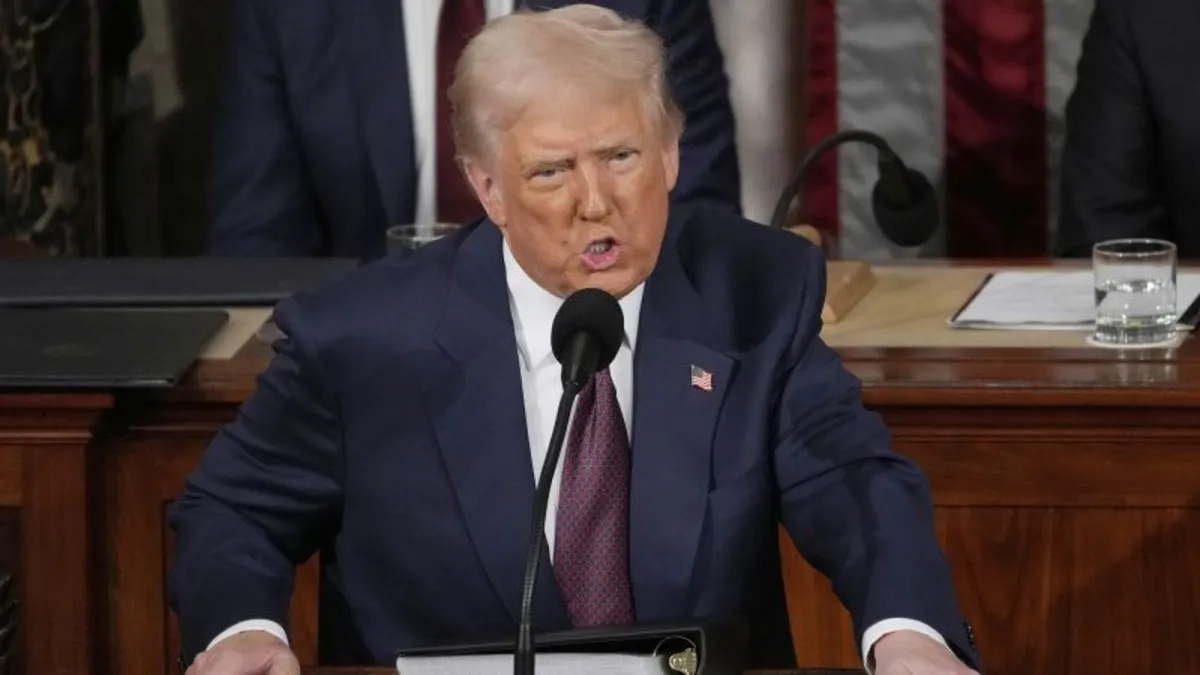
One week following a high-profile appearance by Elon Musk during President Donald Trump’s inaugural Cabinet meeting, key leaders from various government departments gathered once again in the Cabinet Room. This time, the atmosphere was markedly different, as the meeting lasted nearly 90 minutes and was conducted without the presence of cameras. With Musk, a pivotal figure in the administration, seated nearby, Trump conveyed a crucial message to his Cabinet members regarding the management of their agencies.
During this closed-door meeting, Trump emphasized that although he fully supports Musk’s initiatives to reduce the size and spending of the federal government, it is ultimately the Cabinet members who hold authority over staffing decisions. “Keep all the people you want, everybody that you need,” Trump instructed his agency heads, as he later recounted to reporters in the Oval Office. “I want them to do the best job they can. Where we have good people, that’s precious, that’s very important.” This directive underscores the importance of maintaining skilled personnel within the government.
Trump announced that these Cabinet meetings would be held biweekly, marking a significant attempt to curtail Musk’s broad influence. While Musk previously likened his approach to wielding a “chainsaw” for government cuts, Trump clarified that the administration would instead utilize a “scalpel” for more nuanced reductions. Despite Musk’s influential role in recommending cuts across agencies, Trump made it clear that the final decisions rest with the Senate-confirmed Cabinet members.
“We’re going to be watching them, and Elon and the group are going to be watching them. If they can cut, it’s better; if they don’t cut, then Elon will do the cutting,” Trump stated, highlighting the oversight that Musk would have in the process. This meeting served not only as a strategy session but also as a mechanism for the president to assert control over the dynamics of his administration’s second term.
Staffing has emerged as a pressing concern for agency heads, many of whom expressed feelings of being undermanned. In the aftermath of the initial Cabinet meeting, where Musk directed federal employees to recount their workweeks or face termination, several agency leaders advised their teams to disregard the request until further clarification could be provided. Subsequently, a revised directive from individual agencies was issued, granting them greater autonomy over personnel matters.
The recent Cabinet meeting, which did not appear on the public schedule, starkly contrasted with Musk’s earlier celebrated moment in the House chamber, where he received accolades from Trump during a joint session of Congress. Amid the applause, Musk has been pursuing efforts to mitigate backlash regarding some contentious decisions stemming from his role in the Department of Government Efficiency.
White House Chief of Staff Susie Wiles has been actively monitoring increasing criticism directed at Musk from both Republicans and business leaders. Her relationship with Musk is described as cordial and businesslike, and she has encouraged him to engage more openly with members of Congress. During the previous Cabinet meeting, Wiles departed early to attend a lunch with Senate Republicans, where she listened to their concerns and explained the collaborative dynamic between Musk and the president.
In an effort to foster better communication, Wiles has suggested that Musk should take the time to directly address the concerns of lawmakers. Following this, 22 Republican senators attended a meeting with Musk at the Eisenhower Executive Office Building, where he discussed the proposed cuts and answered questions. Republican Senator Mike Rounds from South Dakota urged Musk to clarify how significant reductions would be handled and corrected if necessary.
In recent meetings with House and Senate members, Musk distanced himself from the widespread layoffs occurring within the federal government, attributing the responsibility to department heads. “They trusted the departments to use a scalpel to get rid of people that are unproductive,” Musk reportedly stated. This approach aims to ensure that personnel decisions are based on performance rather than sweeping cuts.
To facilitate communication with lawmakers, Musk offered his personal cell phone number during meetings, although he later directed House members to consult the DOGE website for inquiries. This ongoing dialogue reflects Musk’s commitment to transparency and collaboration as he navigates the complexities of his role within the Trump administration.
This article has been updated to include new details regarding the evolving dynamics between Elon Musk, Donald Trump, and their Cabinet members. The future of government efficiency and staffing remains a critical focus as these discussions continue.